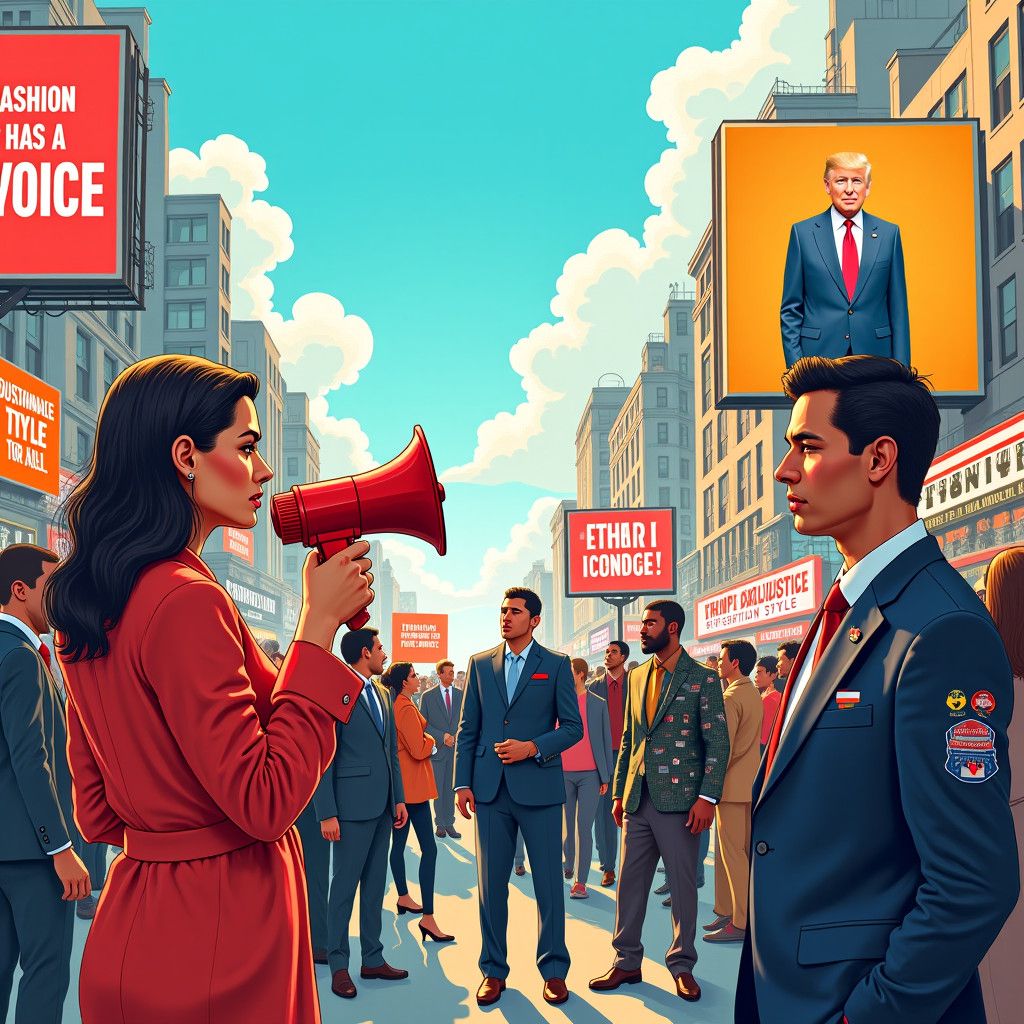In a recent emotional moment on a Los Angeles hotel room set for a fashion photoshoot, Willy Chavarria, a prominent designer, reflected on the impact of Donald Trump’s return to political power. As he spoke about the fears his immigrant family faces under an administration that has previously fueled divisive rhetoric and policies, it became clear that the fabric of the fashion industry is intricately woven with social issues. In an age when brands increasingly choose to engage—or disengage—on sociopolitical matters, the stakes for fashion’s advocacy are higher than ever.
Chavarria has been an outspoken advocate for progressive causes in fashion. His past collections have featured powerful statements against policies that separate families at the US border, and he is actively using his platform to draw attention to systemic racism and human rights. As a designer, he believes that passing over these issues is no longer an option. “There just isn’t room to be frivolous and ignore what’s going on,” he stated, clearly expressing the urgency felt by many in the industry.
The implications of Trump’s electoral win reverberate through fashion, prompting brands to reconsider their positions on social advocacy. Prior to this shift, several companies had adopted a cautious approach to engagement with political issues, particularly in the wake of public backlash against entities like Target and Bud Light following their support for LGBTQ rights. This trend of avoidance was compounded by the Supreme Court’s 2023 decision against affirmative action, further inciting fears about backlash from conservative consumers.
However, with Trump now in office, a different dynamic may emerge. Experts suggest that brands may feel increasing pressure to engage in advocacy to align with their consumer base, particularly among younger generations who prioritize social issues. Adam Fetcher, a branding expert with prior experience at Patagonia, asserts that the return of Trump to power will illuminate various flashpoints in social discourse, which could compel brands to define and clarify their commitments to social causes.
Advocacy in fashion transcends corporate social responsibility (CSR). It entails active support for causes such as immigration reform, gender equality, and civil rights. Fetcher emphasizes the need for brands to harness their creative capabilities by producing content that raises awareness and mobilizes communities. For instance, Nike effectively integrated social issues into its brand identity by supporting Black Lives Matter in 2016, aligning its messaging with its endorsements of Black athletes.
Social media has become an essential channel for brands seeking to express their advocacy, yet the risk of consumer backlash also remains prevalent. During this precarious time, the most effective advocacy aligns with a brand’s values, ethos, and the concerns of its consumer base. The cosmetics company Glossier recently showcased its commitment to representation and equity by launching a campaign centered on reproductive rights, dovetailing with its identity as a brand focused on empowering consumers.
As brands navigate this complex landscape, they are advised to establish clear communication strategies that resonate with consumers. Companies like Chavarria’s have begun donating to organizations such as the ACLU, channeling financial support into advocacy while using their visibility during events like Fashion Week to promote social causes directly. This multifaceted approach allows brands to tangibly connect their products with the issues they care about.
The pathway forward for brands that have historically shied away from taking a stand on contentious issues involves introspection and strategy development. According to Mark Lipton, a professor at Parsons School of Design, it is crucial for brands to identify one or two core issues that resonate with their constituents. This focus should drive a sustained, meaningful engagement rather than opportunistic actions that lack depth.
The historic context surrounding causes such as education and environmental safety generally connotes safer territory for brands, yet issues like police reform and racial equity can elicit mixed responses. Despite this, brands like Patagonia continue to find beneficial alignment in their activism, emphasizing their commitment to social justice within their operations and messaging.
Looking ahead, as the fashion industry grapples with potential changes in public sentiment and consumer loyalty, a proactive approach is recommended. As Fetcher pointedly notes, “Brands can’t afford to be caught unprepared” for public calls for accountability. Developing relevant content and engaging with real advocates can help brands maintain authenticity and relevance.
Ultimately, the question facing fashion is not whether to participate in discourse but how to do so effectively. As brands reflect on their missions and the societal landscape, the challenge will be to craft messages and actions that strike at the heart of pressing issues—an endeavor that could not only reshape their identities but also influence broader cultural narratives.












